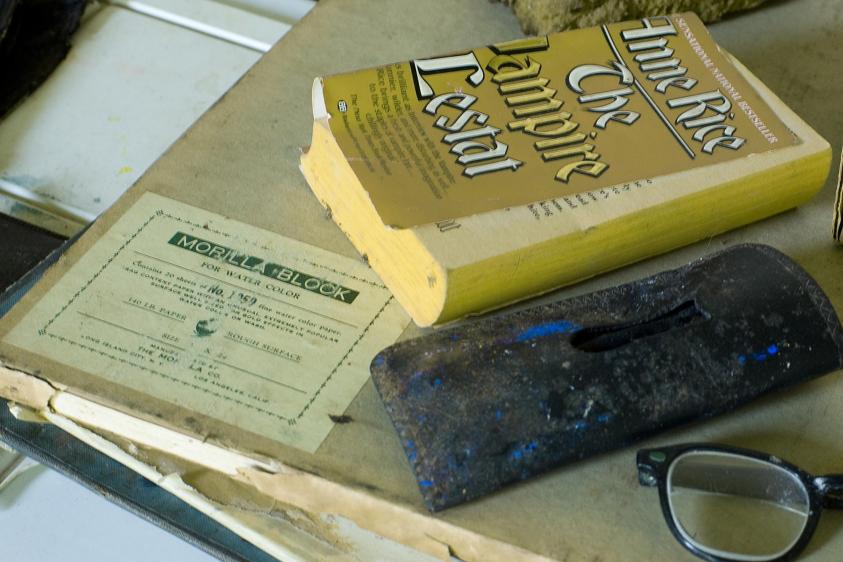Artist:
James Welling
(American, b. 1951)
Lestat
Medium: Archival inkjet print on rag paper
Date: 2011
Dimensions:
15 3/8 × 23 1/2 in. (39.1 × 59.7 cm)
Accession number: 2016.3.6
Copyright: © James Welling
Label Copy:
In 2010, Los Angeles-based artist James Welling began taking a series of color photographs inspired by the painter Andrew Wyeth. Welling started the Wyeth series as an examination of the artist’s influence on his own career. This project represents one artist entering the creative mind of another artist. Welling was fascinated and challenged by what he saw in Wyeth’s work.
In order to experience the physicality of Wyeth’s world, Welling went on location in Pennsylvania and Maine and photographed in the same areas where Wyeth painted throughout his life. His goal was not to make a literal record of these subjects, but rather to reference aspects of Wyeth’s style, technique and palette. Welling’s investigations led him to a greater understanding of the degree of painterly license found in many of Andrew Wyeth’s works. In response, Welling digitally manipulated elements of many of his photographs in the studio in order to capture the moods and atmosphere of Wyeth’s paintings.
Recalling the genesis of "Lestat," Welling wrote: "As a former watercolorist, I was amazed at Wyeth’s collection of watercolor blocks, specially manufactured pads of watercolor paper that facilitate working in this aqueous medium. On top of what must have been a fifty-year-old block were Anne Rice’s novel "The Vampire Lestat" and a pair of reading glasses. The red cover of the book was distracting, so I changed it to yellow in Photoshop to harmonize with the Morilla block below it."
In 2010, Los Angeles-based artist James Welling began taking a series of color photographs inspired by the painter Andrew Wyeth. Welling started the Wyeth series as an examination of the artist’s influence on his own career. This project represents one artist entering the creative mind of another artist. Welling was fascinated and challenged by what he saw in Wyeth’s work.
In order to experience the physicality of Wyeth’s world, Welling went on location in Pennsylvania and Maine and photographed in the same areas where Wyeth painted throughout his life. His goal was not to make a literal record of these subjects, but rather to reference aspects of Wyeth’s style, technique and palette. Welling’s investigations led him to a greater understanding of the degree of painterly license found in many of Andrew Wyeth’s works. In response, Welling digitally manipulated elements of many of his photographs in the studio in order to capture the moods and atmosphere of Wyeth’s paintings.
Recalling the genesis of "Lestat," Welling wrote: "As a former watercolorist, I was amazed at Wyeth’s collection of watercolor blocks, specially manufactured pads of watercolor paper that facilitate working in this aqueous medium. On top of what must have been a fifty-year-old block were Anne Rice’s novel "The Vampire Lestat" and a pair of reading glasses. The red cover of the book was distracting, so I changed it to yellow in Photoshop to harmonize with the Morilla block below it."

